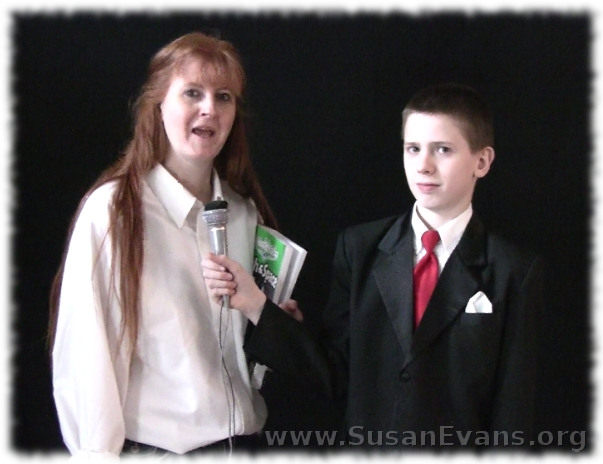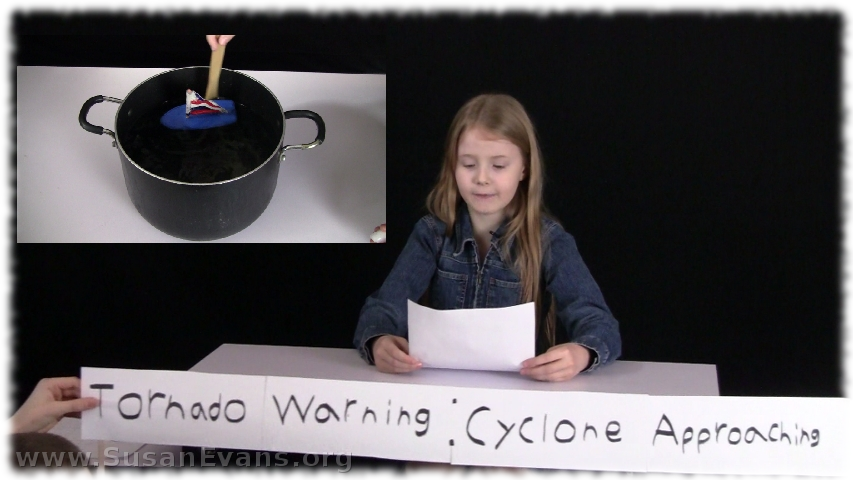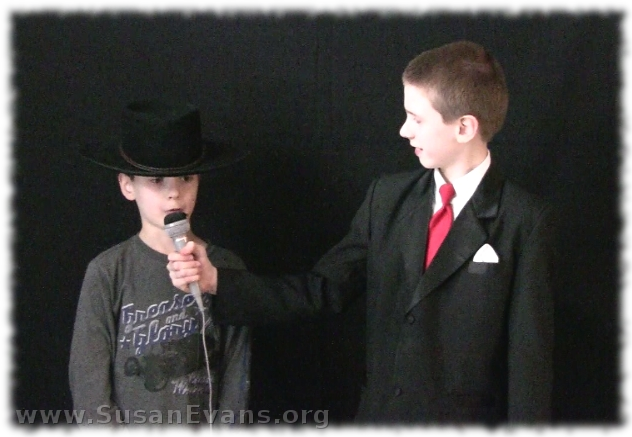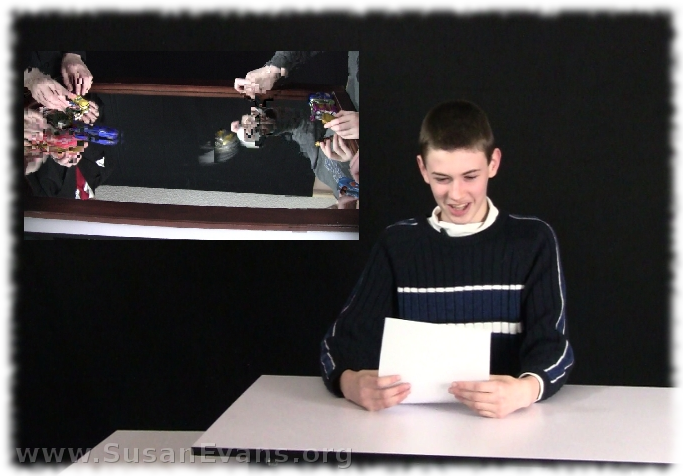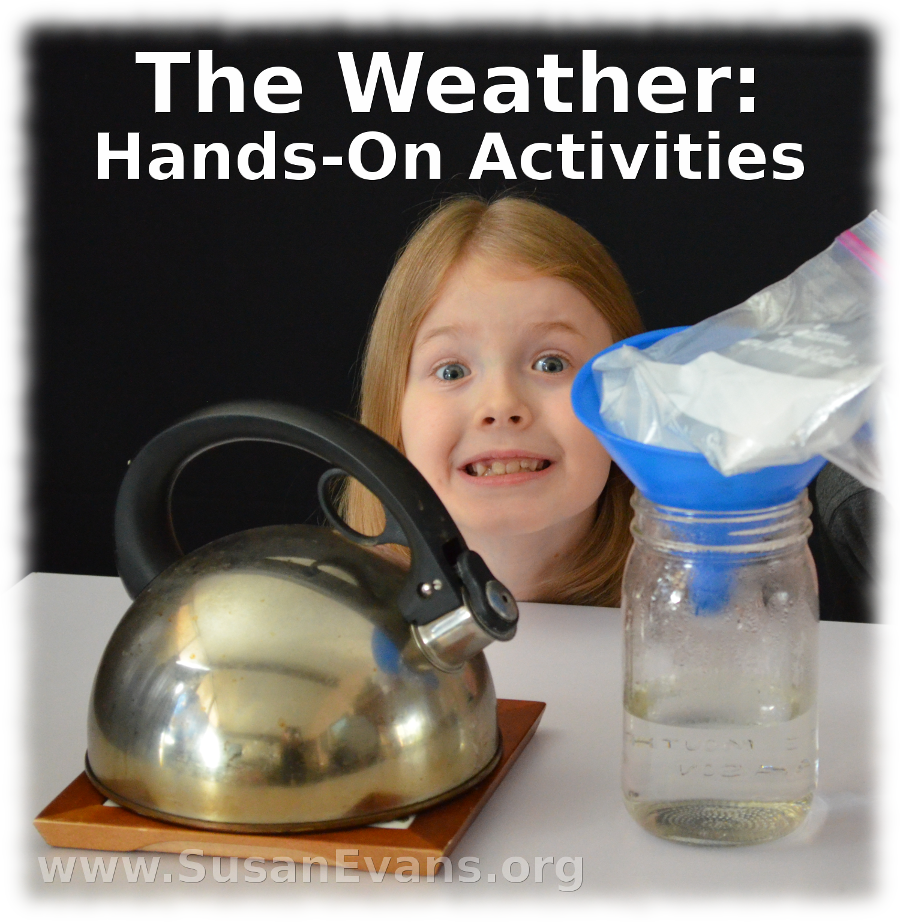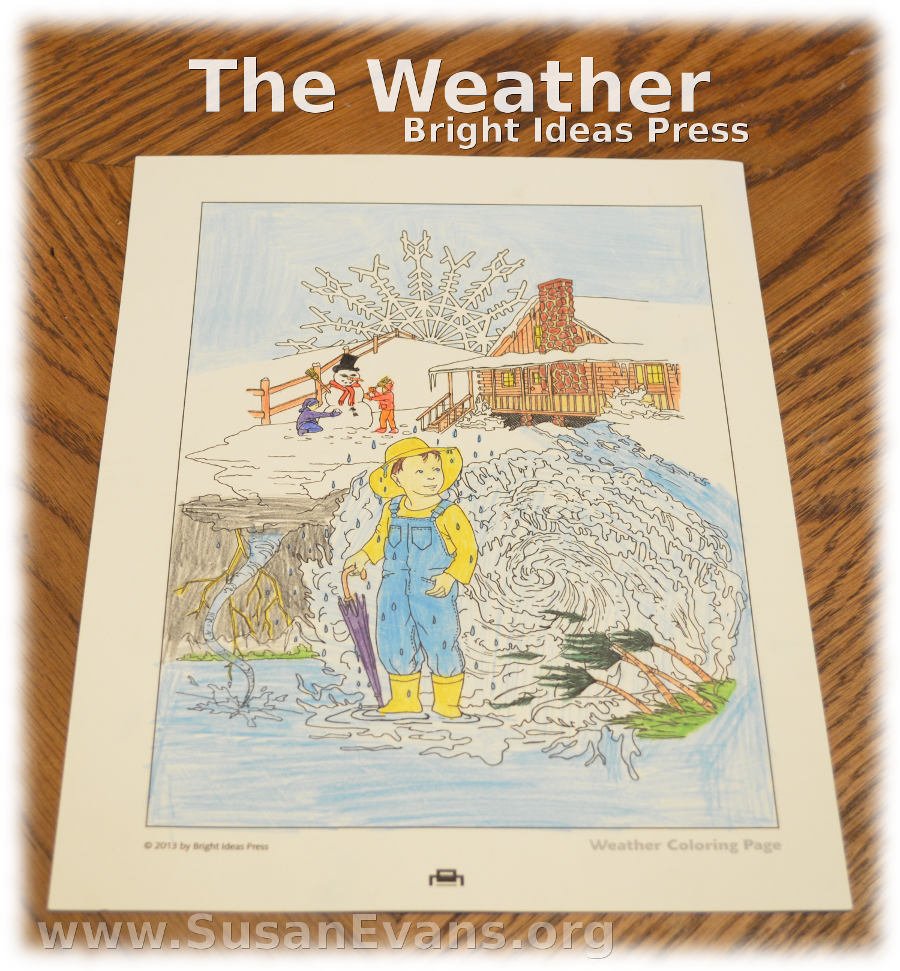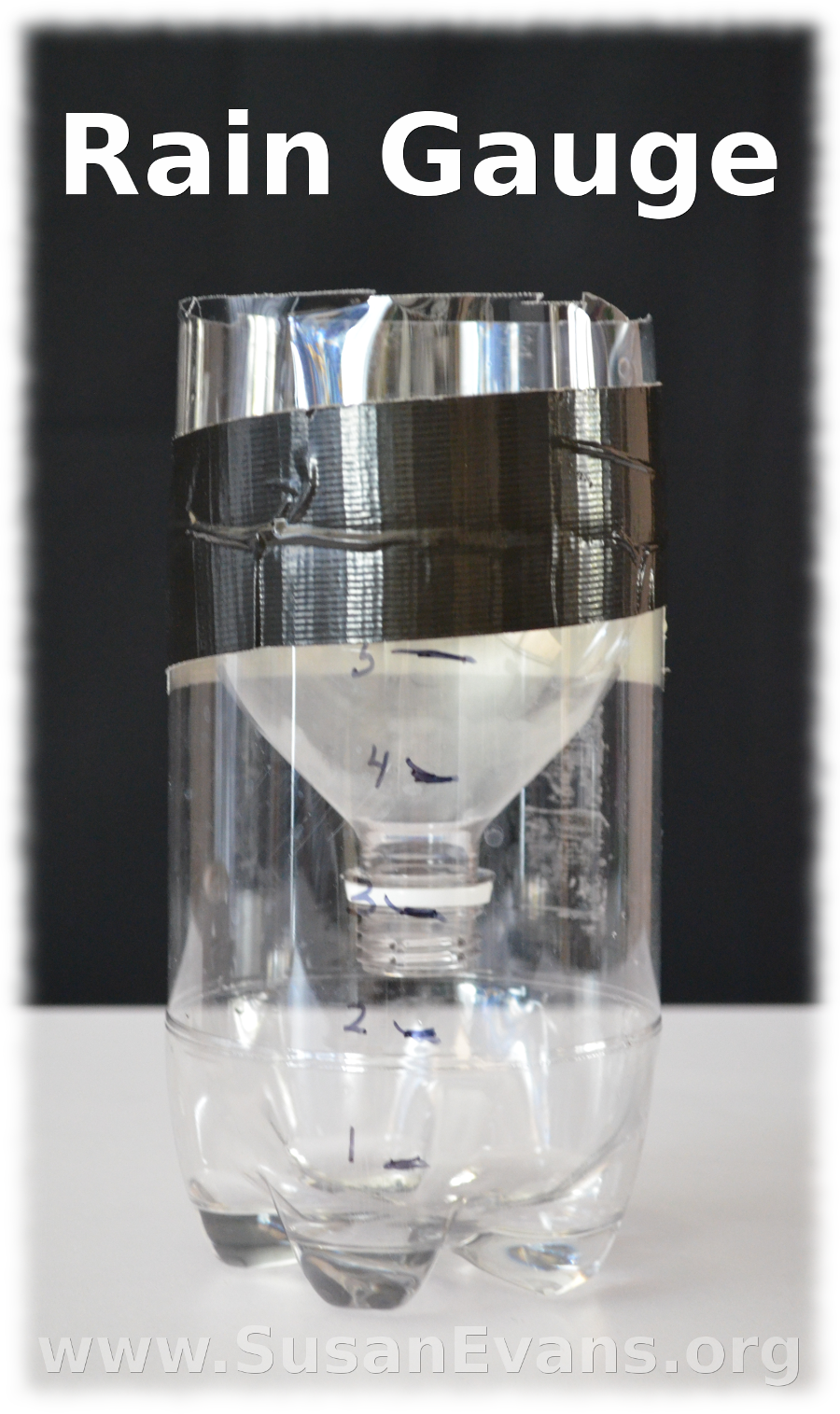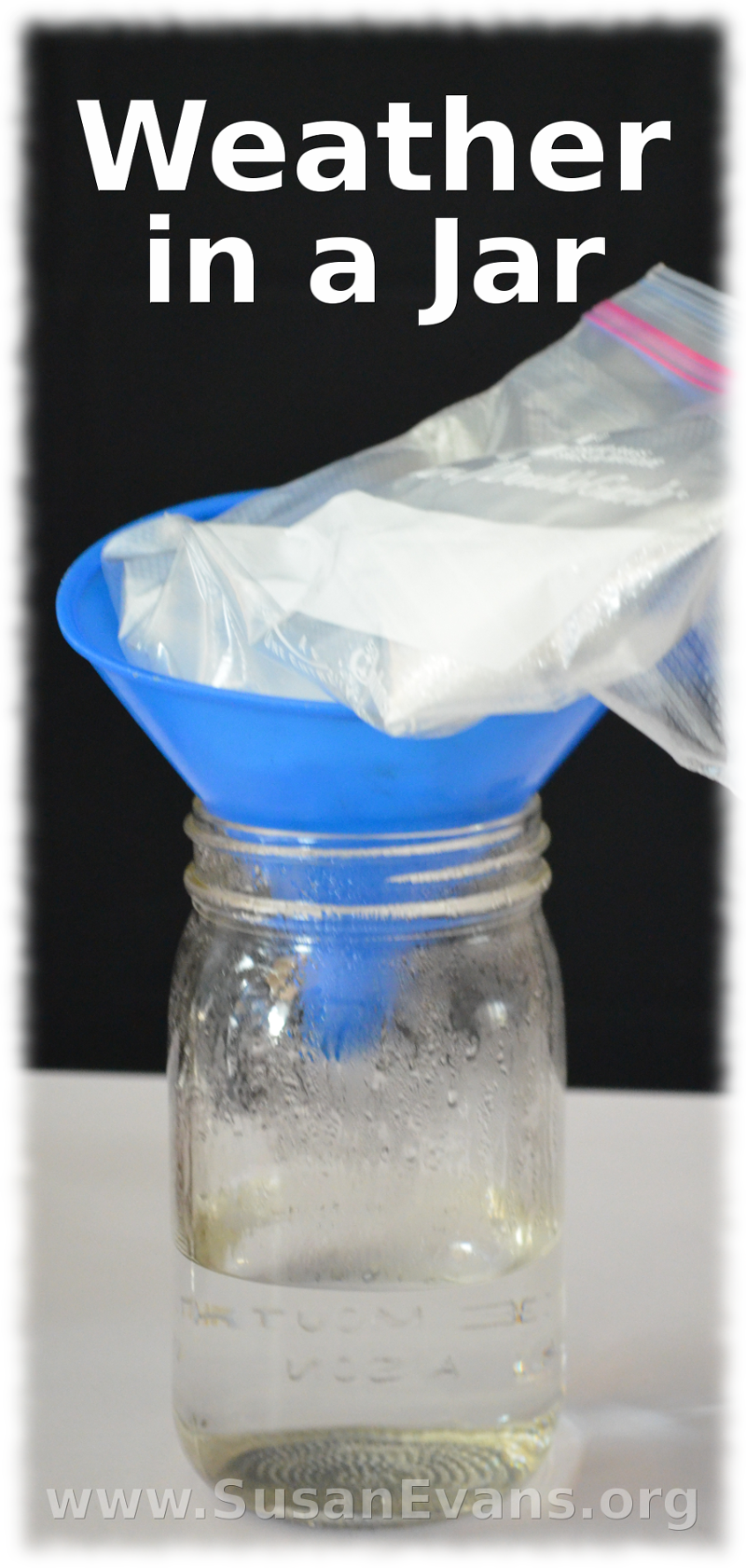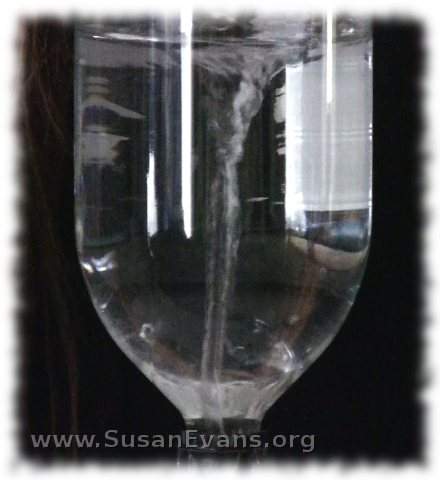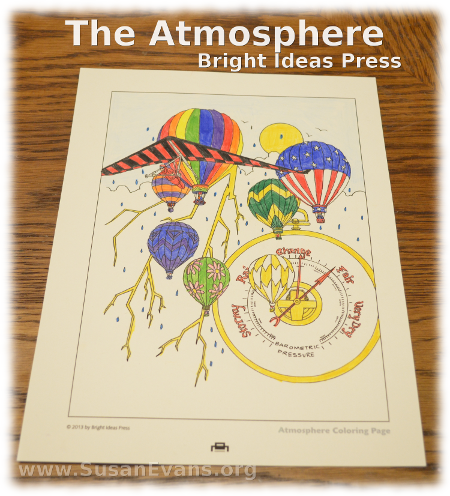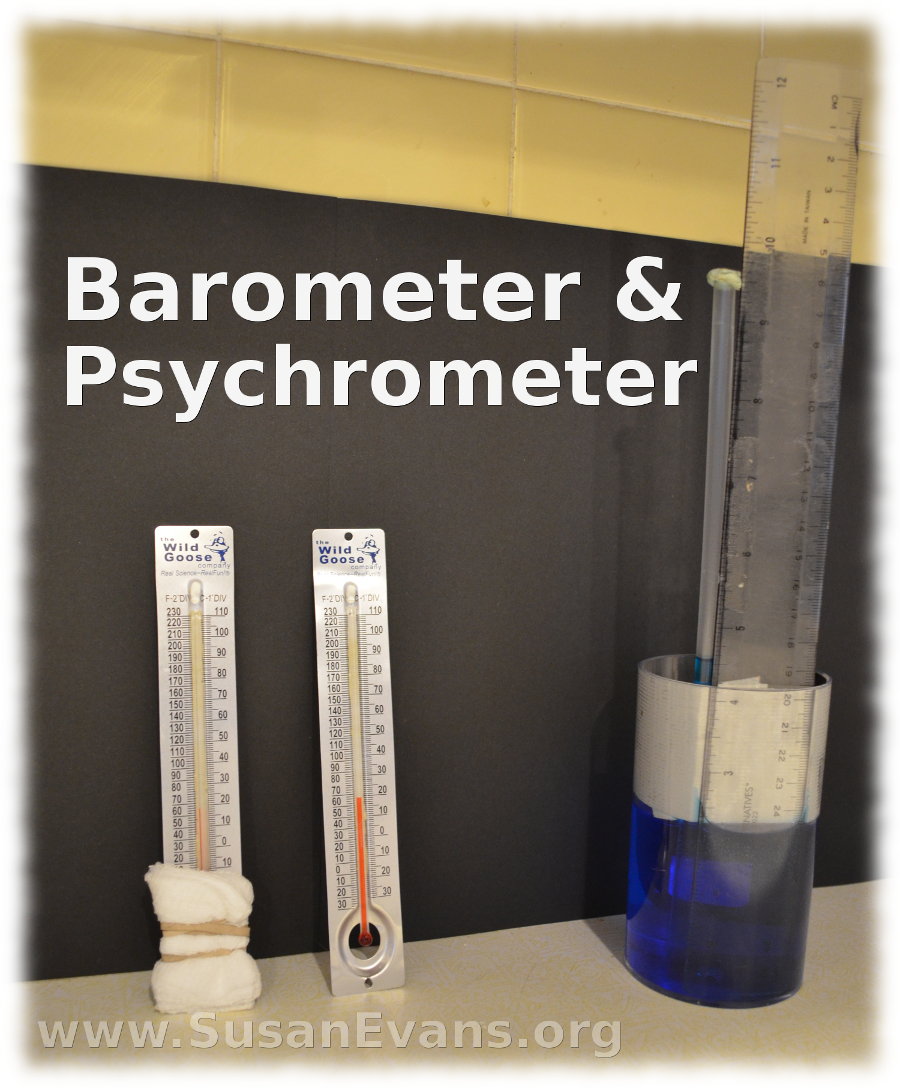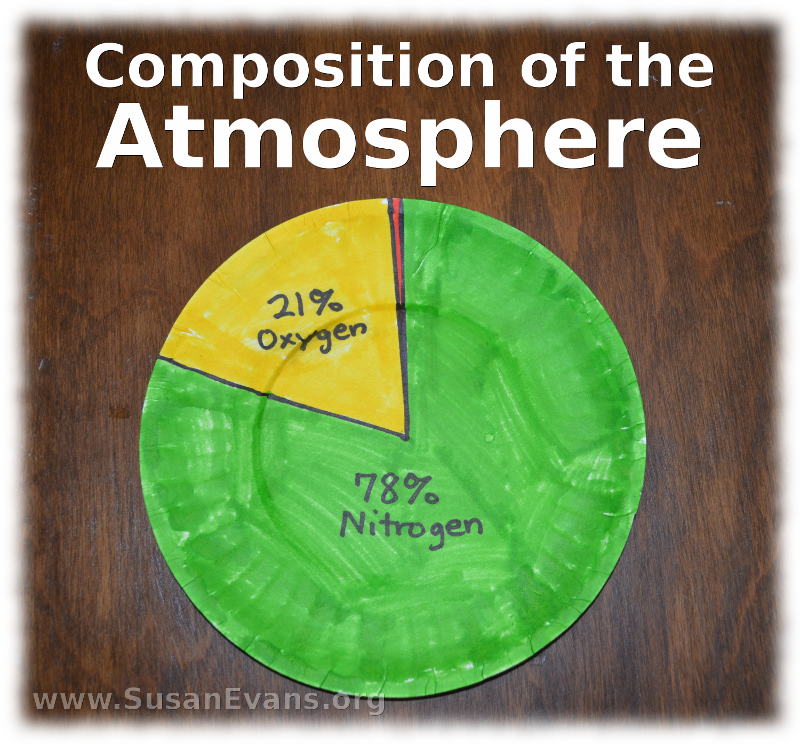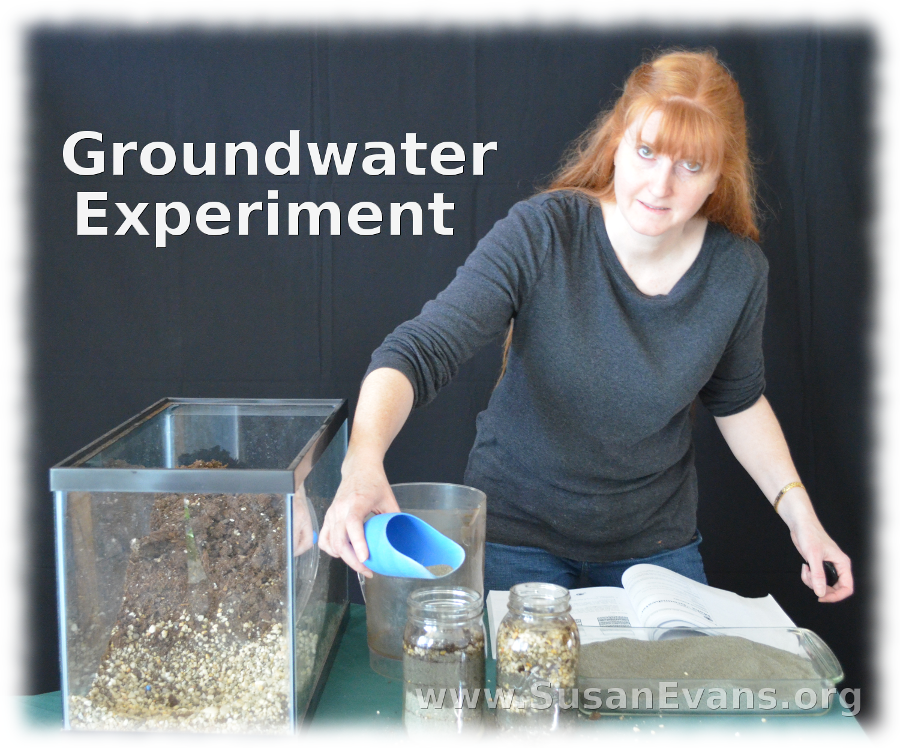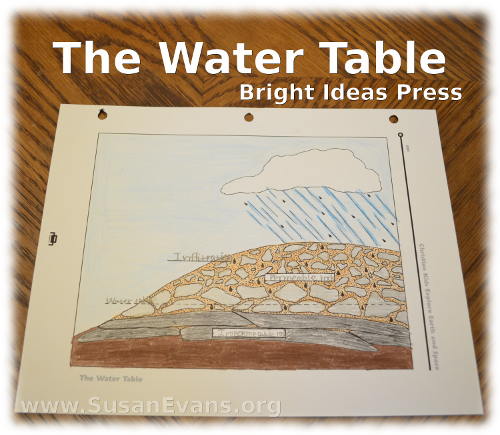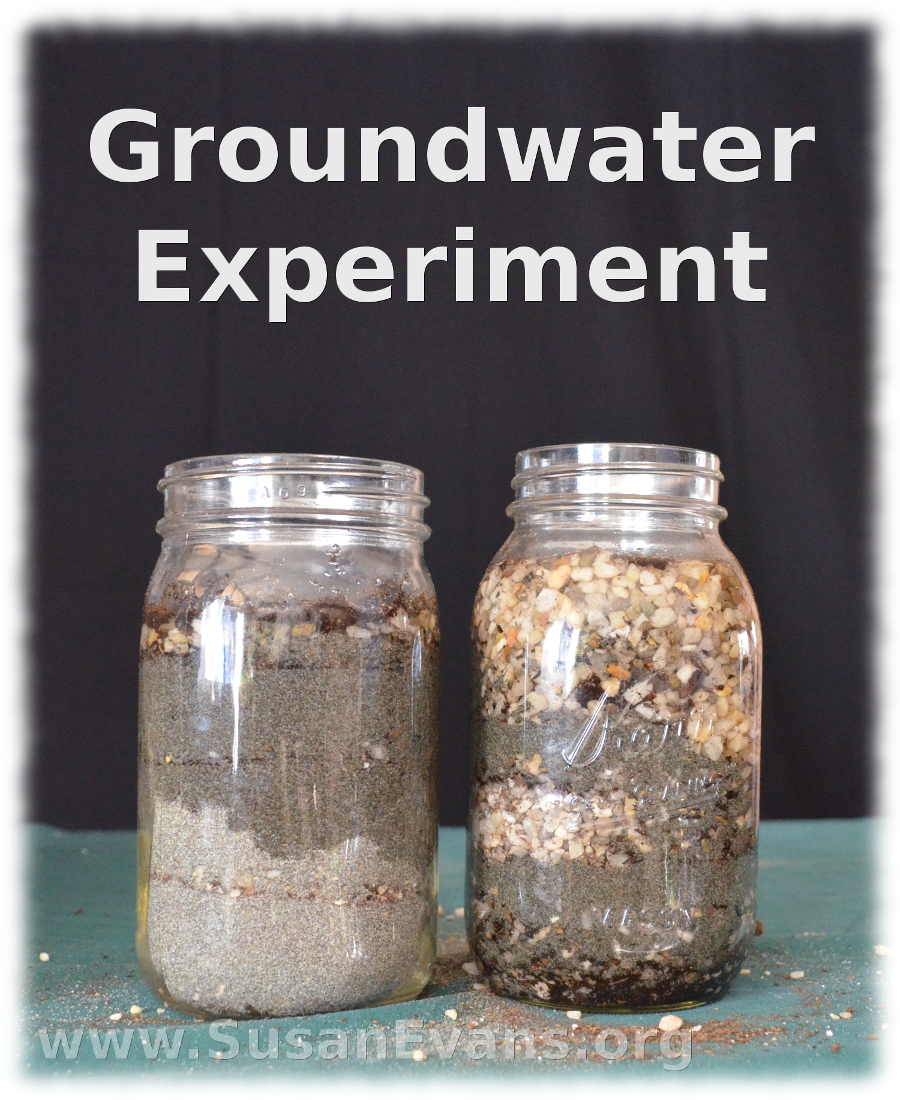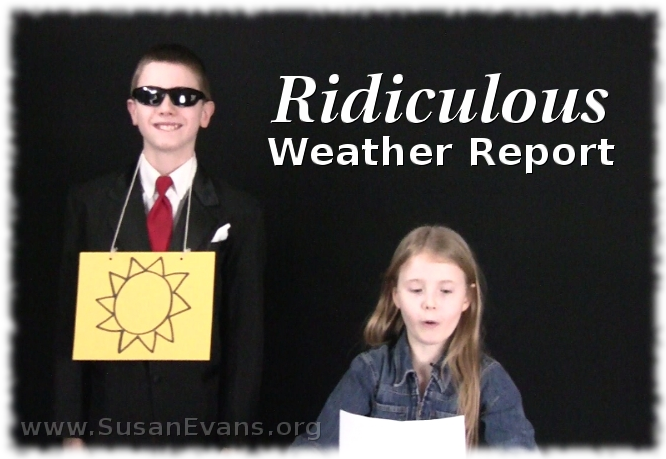 This post contains affiliate links. I was compensated for my work in writing this post.
This post contains affiliate links. I was compensated for my work in writing this post.
Why not record a ridiculous weather report with your kids? We had a blast! We got this idea from one of the weather chapters from Earth and Space by Bright Ideas Press. We are having a ball doing all the hands-on activities in the book.
You can choose to do a weather forecast about tornadoes or hurricanes. You can then add other crazy weather phenomena. If you have young children, you can tie in Cloudy with a Chance of Meatballs, which has food raining from the sky. You can film your children dropping food onto a town made out of Legos. Slop a big pancake on top of a skyscraper. Have fun!
You will need a desk and a chair so that your children can look like official reporters. A suit and tie makes boys look super sharp, and girls can wear dresses or collared shirts with pants. A dark background is preferable, especially if you are going to act out the news on the side.
My son made a tornado warning on a long strip of paper taped together. He wrote his warning with black permanent marker. You need two people to run the paper along the bottom of the screen while you are filming. You have to hunch down so nobody sees you, and hold the paper tight by pulling on each end, while making it go across the screen.
As you can see, we also had a hurricane filmed by splashing a toy boat in a pot full of water. We stirred the pot with a wooden spoon, throwing in an ice cube to represent the iceberg.
Try to get your kids to enunciate clearly. I had one son that would slur his words together, and it was difficult to understand what he was saying, especially when he was trying to talk with a farmer accent.
You can also interview people as to which season they like best and why. This was one of the activities suggested in the book, and we decided to incorporate that into the weather report. You can do interviews of people who have survived earthquakes, tornadoes, etc. Also, any eyewitnesses can describe weather catastrophes. You can wildly exaggerate these until your kids are laughing hysterically!
You can also use mirrors and any other props for your weather report. We used a mirror and lots of matchbox cars to dramatize the weather report about freezing rain, where cars were slipping all over the place. It was ironic that pizza was ordered at the end of that clip, because the pizza delivery guy would still have to drive in those slippery conditions.
Here is the 4-minute video where we do a ridiculous weather report:
What I loved about this activity is that we were able to bring in clips from other Earth and Space videos. For example, we brought in the volcano eruption from Make Your Own Volcano and the earthquake scene with sand and Legos from Plate Tectonics and Earthquakes. We also brought back the sun character (with sunglasses and a yellow sun label) that has made appearances in several of the videos, starting with the first video in The Earth: Hands-on Activities post. Can you tell that we’re having fun with this book? Why not grab this Earth and Space by Bright Ideas Press for your science curriculum for next year? Your kids will love it!
